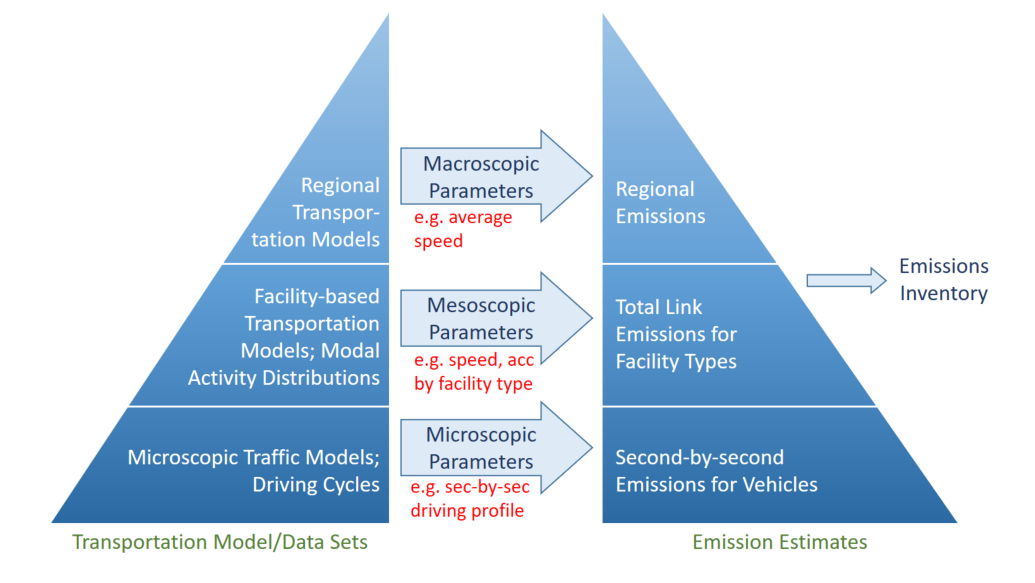CMEM was initially developed in the late 1990's with sponsorship from the National Cooperative Highway Research Program (NCHRP) and the U.S. Environmental Protection Agency (EPA) to fulfill the need for microscopic emissions modeling. This type of model is necessary for evaluating emissions benefits of project-level or corridor-specific transportation control measures (e.g. HOV lanes), intelligent transportation systems (ITS) implementations (e.g. electronic toll collection), and traffic flow improvements (e.g. traffic signal coordination).
CMEM is microscopic in the sense that it predicts second-by-second tailpipe emissions and fuel consumption based on different modal operations from in-use vehicle fleet. One of the most important features of CMEM is that it uses a physical, power-demand approach based on a parameterized analytical representation of fuel consumption and emissions production. In this type of model, the entire fuel consumption and emissions process is broken down into components that correspond to physical phenomena associated with vehicle operation and emissions production. Each component is modeled as an analytical representation consisting of various parameters that are characteristic of the process. These parameters vary according to the vehicle type, engine, emission technology, and level of deterioration. One distinct advantage of this physical approach is that it is possible to adjust many of these physical parameters to predict energy consumption and emissions of future vehicle models and applications of new technology (e.g., after-treatment devices).
The required inputs for CMEM include vehicle activity (second-by-second speed trace, at a minimum) and fleet composition of traffic being modeled. The initial version of CMEM contains 23 light-duty gasoline vehicle/technology categories characterized by emission control technology, emission certification standard, mileage, power-to-weight ratio, and high emitting characteristic. With the continued support by the U.S. EPA, CMEM has been maintained and updated by adding new vehicle/technology categories as they emerge. Examples of added vehicle/technology categories are ultra-low emission vehicles (ULEV), super ultra-low emission vehicles (SULEV), and partial zero emission vehicles (PZEV). In addition, CMEM has been expanded to include the heavy-duty diesel vehicles. The current version of CMEM (version 3.0, 2005) includes 28 light-duty vehicle/technology categories and 3 heavy-duty vehicle/technology categories.
CMEM is a public-domain model and has several hundred registered users worldwide. At present, it is claimed to be the most detailed and best tested model for estimating hot-stabilized vehicle exhaust emissions at different speeds and accelerations [Dowling et al., 2005]. For further information on the CMEM efforts, please refer to [Barth et al., 1996; Barth et al., 1997; Barth et al., 1999; Barth et al., 2004].
For more information E-mail us at cmem@cert.ucr.edu.
